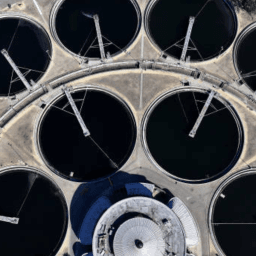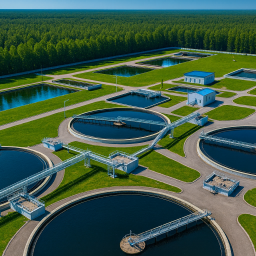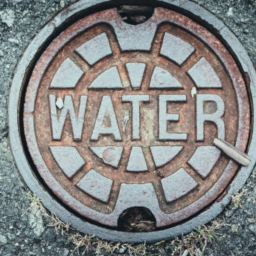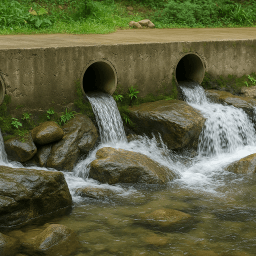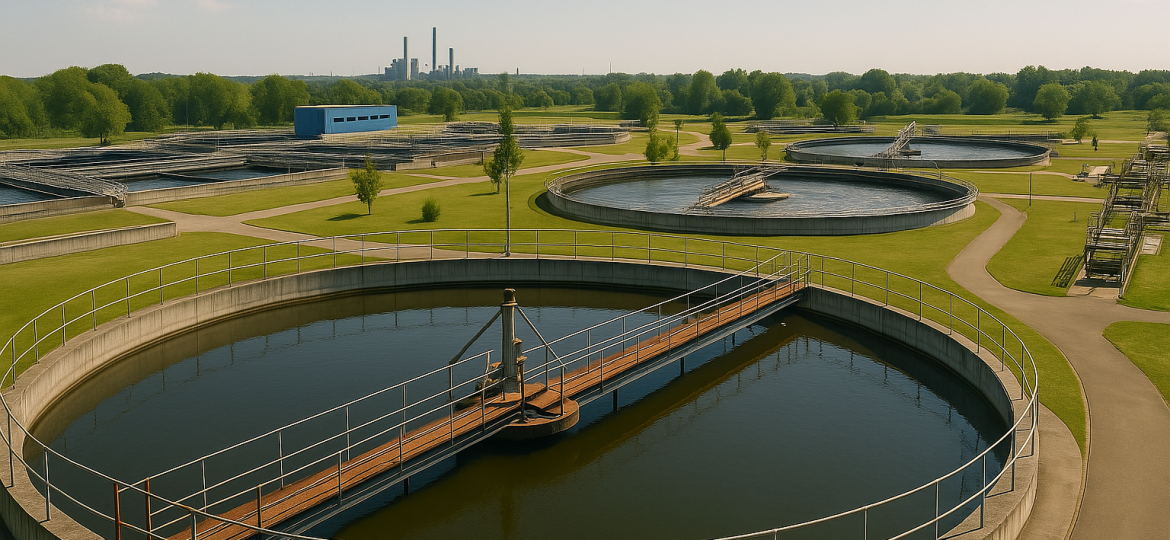
In an era of climate change and rapid urbanization, sewage treatment plants (STPs) have evolved from basic waste processors to critical tools for sustainable development. The World Health Organization estimates that 80% of global wastewater flows back into ecosystems untreated, endangering human health and biodiversity. STPs break this cycle by transforming wastewater into reusable resources while preventing environmental contamination. For water-scarce regions like the Middle East and India, where groundwater tables are depleting at alarming rates, STPs are not optional – they’re essential infrastructure for survival.
What is a Sewage Treatment Plant?
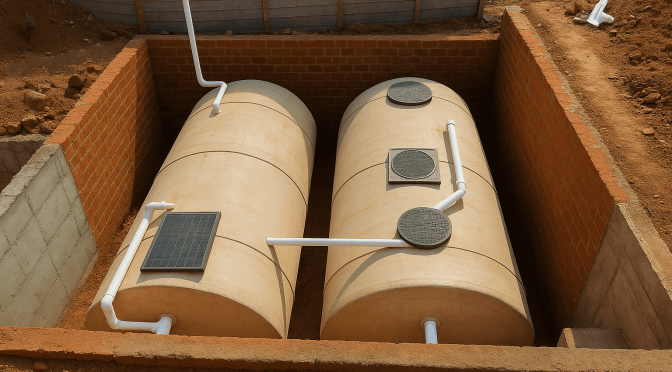
A Sewage Treatment Plant (STP) is an engineered system that replicates natural purification processes at accelerated speeds. Unlike septic tanks that merely store waste, STPs actively remove:
Organic pollutants (food waste, human/animal waste)
Nutrients (nitrogen, phosphorus) causing algal blooms
Pathogens (bacteria, viruses, protozoa)
Emerging contaminants (microplastics, pharmaceutical residues)
Modern STPs integrate smart sensors and IoT-based monitoring to optimize performance in real-time, making them indispensable for sustainable cities.
The Three Stages of Sewage Treatment (Enhanced Process Flow)
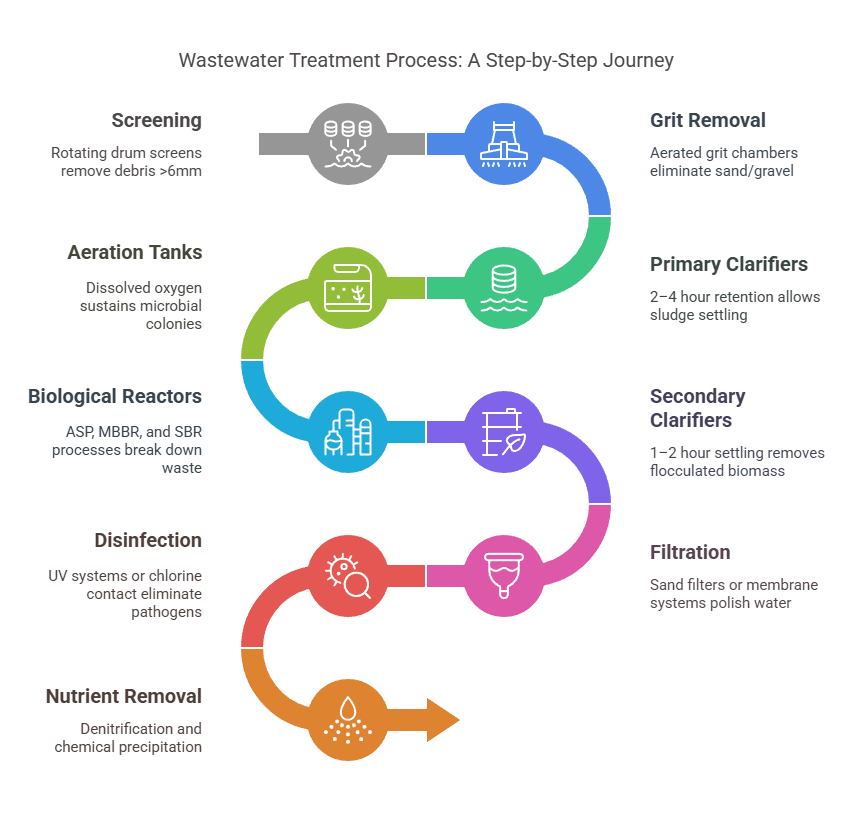
1. Primary Treatment: Physical Separation
Screening: Rotating drum screens remove debris >6mm (rags, plastics)
Grit Removal: Aerated grit chambers eliminate sand/gravel
Primary Clarifiers: 2–4 hour retention allows sludge settling (removes 50–60% TSS)
2. Secondary Treatment: Biological Breakdown
Aeration Tanks: Dissolved oxygen (2–4 mg/L) sustains microbial colonies
Biological Reactors:
ASP: MLSS maintained at 2,000–4,000 mg/L
MBBR: 40–60% biofilm coverage on carriers
SBR: 4-phase cycle (fill, react, settle, decant)
Secondary Clarifiers: 1–2 hour settling removes flocculated biomass
3. Tertiary Treatment: Advanced Polishing
Filtration: Sand filters (multi-layer) or membrane systems (0.1–0.4 µm pores)
Disinfection:
UV systems (40–80 mJ/cm² dosage)
Chlorine contact (0.2–1 mg/L residual)
Nutrient Removal:
Denitrification (anoxic zones with methanol dosing)
Chemical precipitation (alum/ferric salts for phosphorus)
Why Efficient STPs Are Crucial for Modern Cities
Case Study: Dubai’s Sustainable City
Dubai’s Sustainable City uses MBR-based STPs to achieve 100% water reuse for irrigation and cooling systems. The plant processes 1,500 m³/day with <1 NTU turbidity in effluent, demonstrating how advanced STPs enable closed-loop water systems in arid regions.
Key Benefits Beyond Compliance
Resource Recovery: Biogas from sludge digestion can power 20–40% of plant operations
Climate Resilience: Proper wastewater management reduces urban flooding risks
Economic Value: Treated water costs 30–50% less than desalinated water
Main Types of Sewage Treatment Plants
Activated Sludge Process (ASP): Aerates wastewater to encourage microbial activity that breaks down organic matter. Ideal for larger communities or commercial areas.
Sequencing Batch Reactor (SBR): Treats wastewater in timed batches within a single tank. Compact, flexible, and automated.
Membrane Bioreactor (MBR): Combines biological treatment with membrane filtration for ultra-clean water, suitable for reuse.
Moving Bed Biofilm Reactor (MBBR): Uses plastic carriers for biofilm growth, increasing microbial treatment capacity. Compact and scalable.
Trickling Filter System: Wastewater trickles over a media bed where microbes treat it. Simple and low-energy, suitable for smaller or rural setups.
Rotating Biological Contactor (RBC): Rotating discs foster microbial growth and alternate exposure to air and water. Energy efficient and quiet.
Future Trends and Innovations in Sewage Treatment Plants (STPs)
As wastewater treatment demands evolve in India and globally, new priorities like decentralization, climate adaptation, cost optimization, and digital integration are shaping the next generation of STPs. Below are the top trends every planner and sustainability stakeholder should know:
1. Decentralized vs. Centralized STPs
With the rise in gated communities, hospitals, resorts, and industrial clusters, decentralized STPs are becoming the preferred solution. Unlike large centralized plants, these systems are installed near the source, offering:
Lower capital and operational costs
Modular expansion capabilities
Localized water reuse for gardening, flushing, or cooling towers
Technologies like MBBR, FAB, and Constructed Wetlands are well-suited for decentralized applications.
2. Geographical Variations in STP Design
STP designs must adapt to local climate, soil type, and altitude. For example:
Cold regions (Himalayan towns) often use passive or insulated systems to reduce energy use
Coastal cities must plan for corrosion resistance and tidal backflow
Rural areas prefer gravity-fed, low-tech designs using less power
This tailoring ensures longevity, energy efficiency, and better compliance.
3. Emerging Contaminants & Microplastics
Modern sewage now contains trace contaminants like:
Pharmaceuticals and hormones
Microplastics and personal care product residues
Standard secondary treatment may not remove these effectively. Advanced tertiary methods such as ozonation, activated carbon filtration, and ultrafiltration membranes are becoming essential.
4. Lifecycle Cost Analysis (LCCA) of STPs
Understanding the total cost of ownership is critical. While CAPEX varies widely (e.g., MBBR is cheaper than MBR), recurring O&M costs can offset initial savings.
Example:
MBBR: Lower initial cost, moderate OPEX
SBR: Moderate CAPEX, higher automation
MBR: High CAPEX, best quality output
Biogas recovery and treated water reuse can significantly improve ROI.
5. Integration with Rainwater Harvesting and ETPs
Modern buildings and campuses are integrating STPs with:
Rainwater Harvesting (RWH) for groundwater recharge
Effluent Treatment Plants (ETPs) for industrial effluent reuse
This holistic water loop approach reduces freshwater dependency and aligns with green building norms (IGBC, LEED).
6. Public Awareness & Community-Led STPs
Decentralized STPs aren’t just for institutions. Across India, villages and urban slums are managing their own STPs through:
NGO or CSR support
Public-private partnerships (PPPs)
Community training and employment
Such projects improve ownership, reduce maintenance failures, and support sanitation goals under Swachh Bharat.
7. Sensor-Based Real-Time Water Quality Monitoring
Modern STPs are incorporating IoT-based sensors to continuously monitor parameters like:
BOD
TSS
Turbidity
pH
These are fed into SCADA dashboards or mobile apps for real-time compliance and maintenance alerts—greatly reducing manual intervention.
8. STPs in Industrial Parks and Commercial Buildings
Commercial and industrial setups have non-uniform load profiles, mixing greywater and process wastewater. Their STPs require:
Greater shock load tolerance
Chemical compatibility
Advanced sludge handling
Case studies include STPs in IT parks, SEZs, shopping malls, and manufacturing units, designed for automation and minimal footprint.
9. Digital Twin & Predictive Maintenance in STPs
Digital twins—a virtual replica of your STP—combined with AI can:
Predict equipment failure
Optimize aeration and sludge cycles
Reduce energy costs
Schedule preventive maintenance
Such systems reduce downtime and OPEX while improving treatment performance.
Benefits of a Well-Designed Sewage Treatment Plant
Environmental and Health Advantages:
Reduces pollution and protects water bodies
Controls disease spread by removing pathogens
Safeguards aquatic life
Economic and Community Gains:
Enables water reuse, lowering municipal water costs
Adds long-term value to properties and infrastructure
Supports compliance with environmental regulations
Common Challenges in STP Management
Skilled manpower shortage
Urban space constraints
High initial investment for advanced systems
Maintenance and operational issues if not managed properly
SUSBIO and SUSBIO ECOTREAT: Innovation in Sewage Treatment

SUSBIO has emerged as a pioneering force in sewage treatment technology, offering cutting-edge solutions like the SUSBIO ECOTREAT—a prefabricated, modular sewage treatment plant designed to revolutionize wastewater management. Engineered for efficiency, sustainability, and ease of operation, this system addresses the limitations of traditional STPs with its advanced engineering and smart design.
Advanced Dual-Treatment Technology
SUSBIO ECOTREAT utilizes a dual-treatment process that combines anaerobic and aerobic biological treatment for superior wastewater purification:
Anaerobic Stage: Organic pollutants are broken down by microorganisms in oxygen-free conditions, reducing sludge production and generating minimal odor.
Aerobic Stage: Oxygen is introduced to accelerate microbial activity, further degrading organic matter and pathogens.
This hybrid approach ensures high-quality effluent suitable for reuse in irrigation, landscaping, or industrial processes, while minimizing energy consumption.
Prefabricated, Plug-and-Play Design
Constructed from fiber-reinforced plastic (FRP), the ECOTREAT system is corrosion-resistant, durable, and lightweight. Its modular, prefabricated design allows for:
Quick installation (weeks instead of months)
Minimal on-site construction
Easy scalability to match growing demands
This makes it ideal for urban environments, remote locations, and retrofitting existing infrastructure.
Fully Automated Operation
Equipped with smart sensors and IoT-enabled controls, the ECOTREAT operates autonomously:
Self-regulating processes adjust to fluctuating wastewater loads.
Remote monitoring provides real-time data on performance, pH levels, and energy use.
Alerts for maintenance needs, reducing downtime and manual oversight.
This automation ensures consistent compliance with environmental standards while lowering labor costs.
Energy Efficiency and Silent Performance
The ECOTREAT system consumes up to 90% less electricity than conventional STPs by:
Optimizing aeration cycles to reduce power usage.
Recovering biogas from anaerobic digestion for optional energy reuse.
Operating silently, making it suitable for noise-sensitive areas like residential complexes and hospitals.
Compact and Space-Saving
Traditional STPs require large land areas, but the ECOTREAT’s modular design needs just 0.5–1 m² per kiloliter of daily capacity. Its compact footprint is ideal for:
High-rise apartments with limited basement space.
Commercial complexes in dense urban areas.
Industrial parks requiring decentralized treatment.
Low Maintenance and Cost-Effective
The ECOTREAT’s FRP construction resists rust, chemicals, and UV damage, ensuring a lifespan of 15–25 years with minimal upkeep. Key advantages include:
Automated sludge removal reduces manual cleaning.
Corrosion-resistant components lower replacement costs.
Predictive maintenance alerts prevent unexpected failures.
Frequently Asked Questions (FAQ) About Sewage Treatment Plants
- What is the difference between sewage and wastewater?
Sewage is primarily bodily waste (feces and urine), while wastewater includes sewage as well as water from showers, kitchens, and industries.
- How does a sewage treatment plant work?
An STP treats wastewater through multiple stages: primary (removal of solids), secondary (biological treatment), and tertiary (advanced purification and disinfection).
- Why is sewage treatment important?
It prevents water pollution, protects public health, and enables water reuse, ensuring compliance with environmental standards.
- What happens to the sludge produced in an STP?
Sludge is collected and treated further—often through digestion and dewatering—before being disposed of or used as fertilizer or for energy recovery.
- How often should a sewage treatment plant be maintained?
Routine maintenance is essential. Sludge should typically be removed every 2–3 years, and the system should be inspected regularly to ensure efficient operation.
- Can treated water from an STP be reused?
Yes, treated water can be reused for landscaping, flushing, or industrial processes, provided it meets quality standards.
- What causes a sewage treatment plant to fail?
Common causes include lack of regular maintenance, overloading, improper use (e.g., flushing inappropriate materials), and equipment failure.
- Do STPs require skilled operators?
Yes, trained personnel are needed to ensure proper operation, maintenance, and compliance with regulations.
- How do I choose the right type of STP for my needs?
Consider factors like wastewater volume, space availability, budget, and local regulations. Consulting with an expert or manufacturer like SUSBIO can help determine the best solution.
- Are SUSBIO ECOTREAT plants suitable for residential and commercial use?
Yes, SUSBIO ECOTREAT is designed for versatility, offering efficient, modular solutions for both residential and commercial wastewater treatment needs.
Conclusion
Sewage Treatment Plants (STPs) are the cornerstone of modern sanitation, environmental protection, and water conservation. By understanding their types, processes, and benefits—and by choosing innovative solutions like SUSBIO ECOTREAT—communities and businesses can ensure safe, efficient, and sustainable wastewater management for the future. Regular maintenance, skilled operation, and the right technology are key to maximizing the value and impact of any STP.



